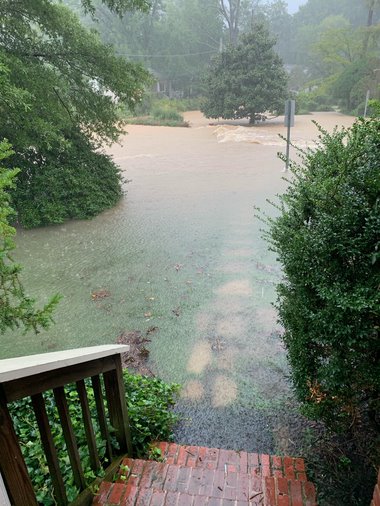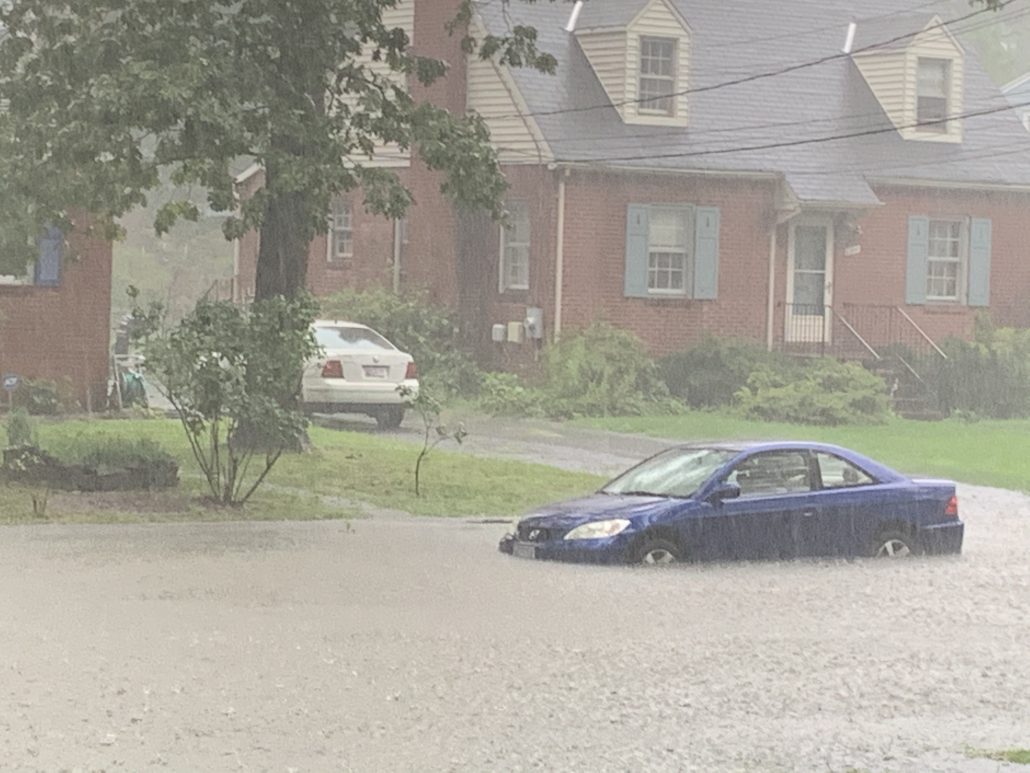By Paul Ruffins

As I reported in my last edition of “Science of the City,” College Park’s stormwater problems have been building for decades; climate change and increased development are two primary drivers. The aging and inadequate stormwater and sewer infrastructure along Guilford Run exacerbates the issue, and the city’s low-lying neighborhood of Calvert Hills suffers the most. As Councilmember John Rigg (District 3) told the CPH&N, “During the massive rainstorm of September 2020, there was literally 3 to 4 feet of water in the streets. And some neighbors experience flooded basements or sewer back-ups nearly every year.”
Rigg and fellow councilmember Stuart Adams (District 3) invited residents to a May 17 virtual meeting with the Prince George’s County Stormwater Management Division to discuss the county’s civil engineering project intended to address the problem of flooding in the city. Cost of the project is estimated at $15.5 million; the project has been plagued by delays and is more than a year behind schedule.
Representing the project team were Jeff DeHan, associate director of stormwater management for Prince George’s County Department of the Environment (PGDOE), Frank Galosi, a stormwater management engineer with the department, and Seyad Sadat, of RK&K Civil Engineering, which is headquartered in Baltimore. Sadat is the lead consulting engineer on the project.

Courtesy of Lis Maring
During the meeting, Galosi presented the four-part improvement plan prepared by the PGDOE. The plan was developed based on negotiations among stakeholders, including representatives from the state and county, the University of Maryland, the Maryland-National Capital Park and Planning Commission, the Army Corps of Engineers and city residents.
The plan addresses a broad range of issues that are specific to flooding in Calvert Hills. Each of the four parts of the plan is detailed below.
Part A: This part of the plan calls for $2.9 million in improvements to the above-ground sections of Guilford Run south of Knox Road. The open channel usually overflows during a 1-year storm, which is a term for the amount of rain predicted during the worst storm in any one year. All the improvements would widen and deepen the open channel and increase the capacity of underground culverts to handle a 5-year storm. But Adams, an engineer and resident of Calvert Hills, recently told the Here & Now, “Unfortunately, with global warming, what were considered 5-year storms when these neighborhoods were built can now happen once or twice a year, and we may see 100-year floods every decade.”
Part B of the plan, which carries a price tag of approximately $5.5 million, would establish two 6 foot by 6 foot boxed culverts under Route 1. These culverts would be more than twice the size of the single 5 foot by 6 foot culvert currently under this busy thoroughfare and would have to be constructed through a complicated maze of existing water, sewer and gas lines.
The plan’s part C, which is estimated at $5.5 million, would address drainage problems in the area bounded by Calvert Road, Bowdoin Avenue, Harvard Road and Dartmouth Avenue. Storm drains in this area would be disconnected from the Calvert Road culvert and then reconnected to two new underground water storage vaults that would be installed under a significant portion of Calvert Park, near the intersection of Bowdoin Avenue and Erskine Road. According to Sadat, the largest vault would be approximately 290 feet long, 150 feet wide and 8 feet deep, with the long side parallel to Erskine Road. It would be connected to the second vault, an 80 foot by 80 foot by 8 foot chamber. The two vaults would be able to quickly store millions of gallons of stormwater which would then be slowly released into the existing CSX-owned drainage culvert in the middle of Calvert Park. The vaults would be covered by a newly installed baseball field.
Part D of the plan, with an estimated cost of $1.5 million, would address flooding near the intersections of Rhode Island Avenue and Drexel and Fordham Roads. Existing storm drains would be disconnected from the Calvert Road culvert, upgraded, and then directed into the new underground vaults.
Galosi also reported that the work will require removing more than 200 trees and replanting about 120. He explained that the project is behind schedule in part due to delays in negotiating temporary construction easements with property owners on each side of Route 1. The most significant delays have been due to design and permitting issues related to the storage vaults under Calvert Park.

During the May 17 meeting, two neighbors who live close to Calvert Park, where the proposed underground vaults would be located, expressed concerns that the vibrations from construction might damage their foundations. DeHan assured them that the county will monitor the foundations throughout construction. Local residents await more information from the county planners regarding what type of monitoring will be used. DeHan also confirmed that the contractor will be fully licensed and insured against possible damages.
Judging from comments posted on a neighborhood listserv and discussions that the Here & Now’s has had with residents, the community’s greatest frustration is that the project, which was supposed to be completed in 2022, may be delayed for at least another year.
When asked if the project will be completed by the end of 2023, as projected, Rigg said, “I’ll believe it when I see it.”







